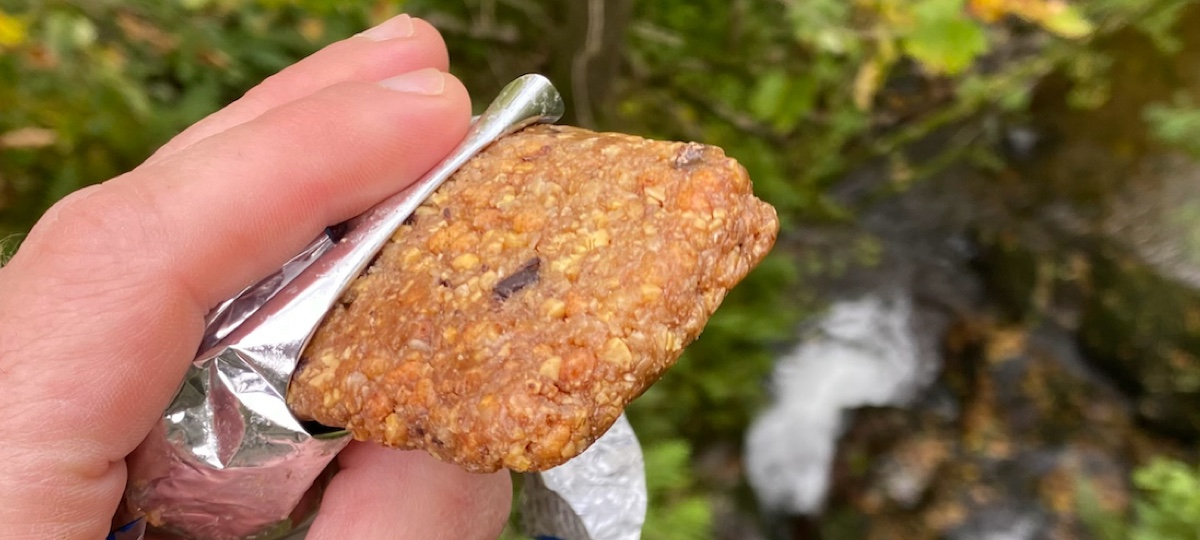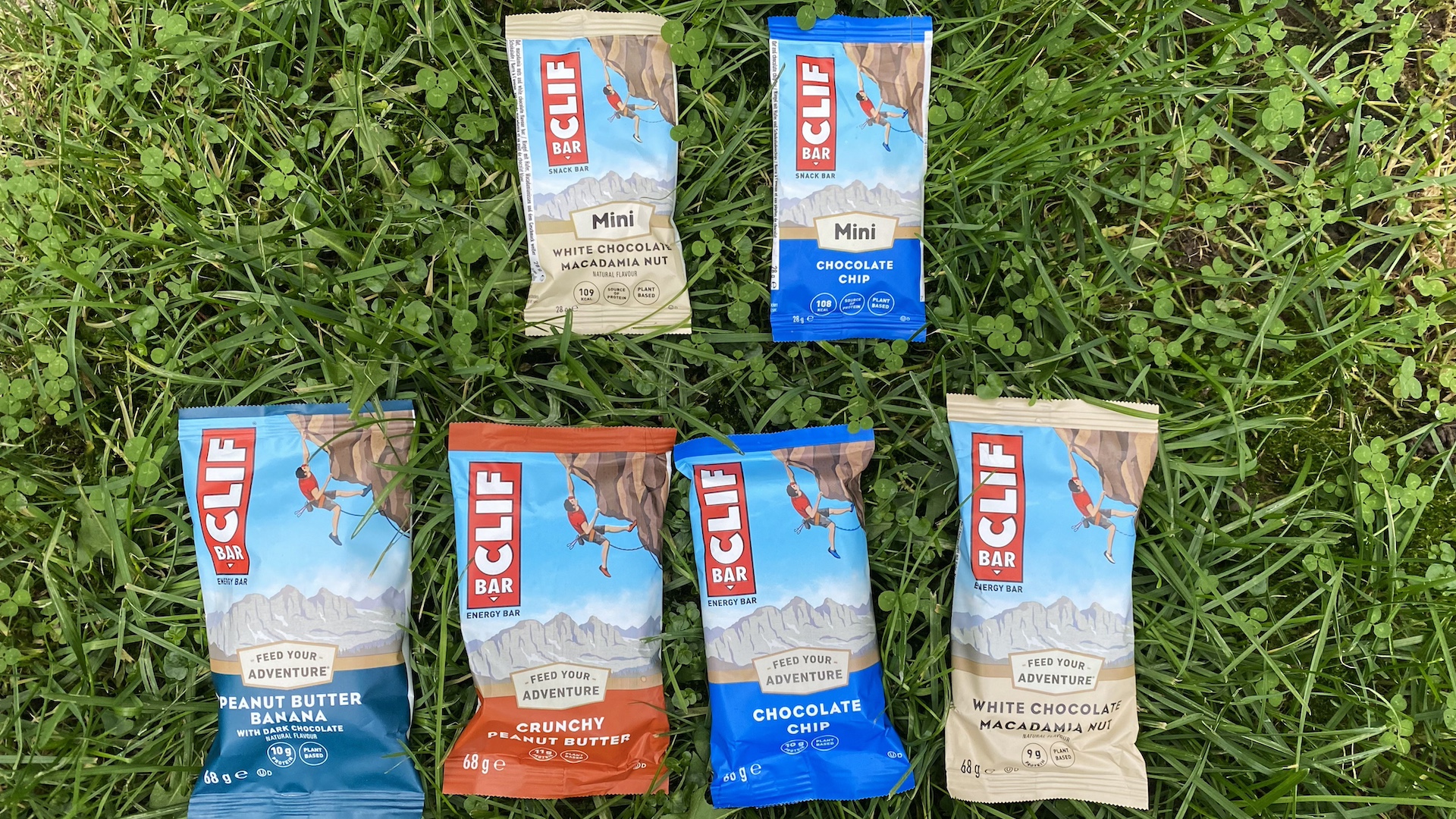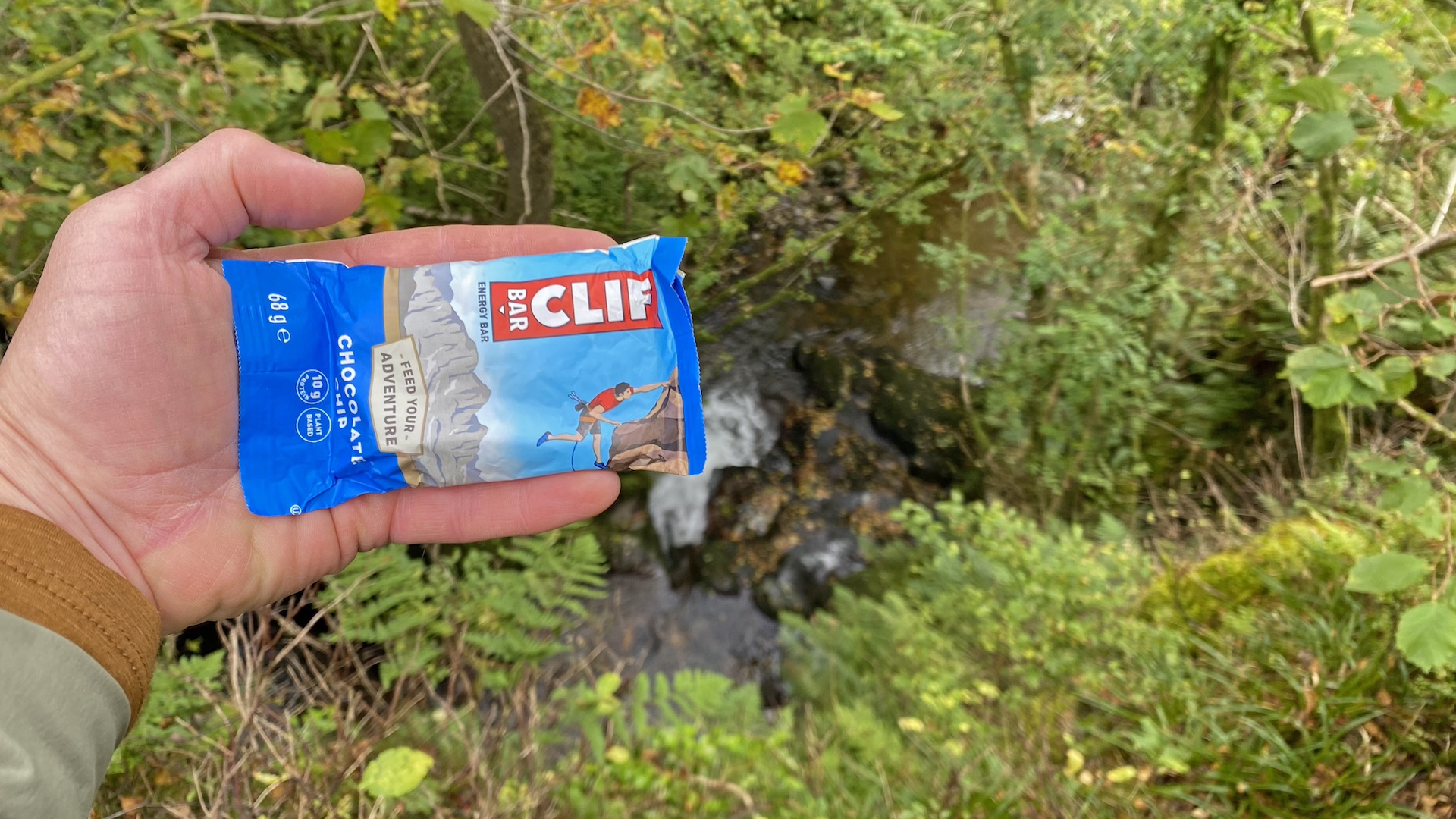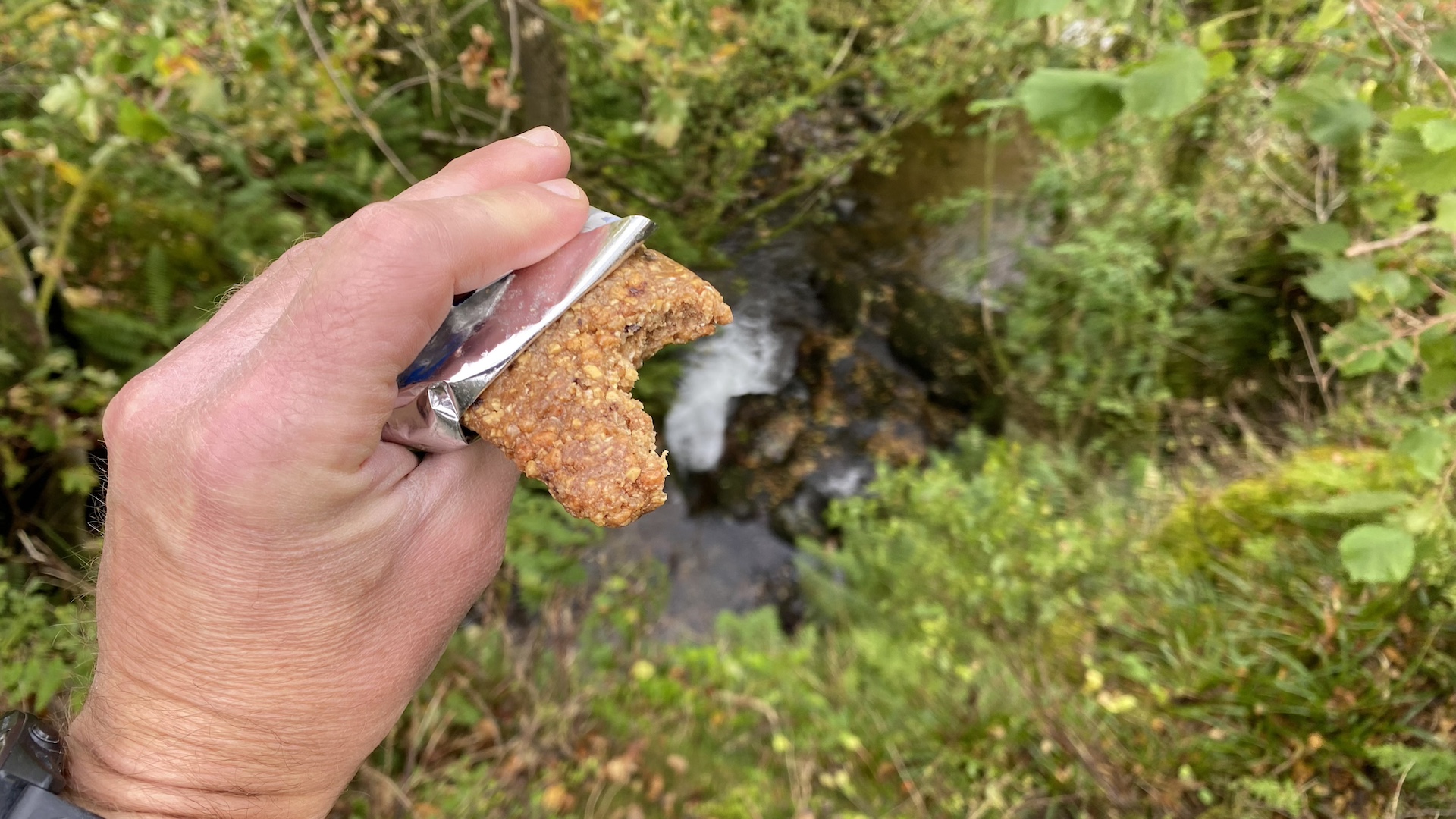
Clif Bars: first impressions

I was beginning to think that a product like the Clif Bar was a fool’s dream. Like most people who enjoy long-distance outdoor pursuits, from ultra running and thru-hiking to fastpacking and bikepacking, I’ve been on a quest to find energy giving products that don’t taste like the bottom of an angry cockatoo’s cage for what seems like an age.
• List price (box of 12 68g bars): $28 (US) / £25 (UK)
• Weight (per standard bar): 68g / 2.4oz
• Flavors: Chocolate Chip / Peanut Butter & Banana / White Chocolate & Macadamia Nut / Crunchy Peanut Butter / Blueberry & Almond Crisp / Oatmeal, Raisin & Walnut / Cool Mint & Chocolate
• Ingredients: Rolled oats, roasted soybeans, rice, tapioca, cane sugar, nuts plus various other things (depending on the flavor)
• Energy (per 68g bar): 1085kJ-1126 kJ / 258kcal–268kcal
• Carbohydrates (per 68g bar): 35g-38g
• Salt (per 68g bar): 0.33g-0.58g
• Protein (per 68g bar): 9g-11g
• Fiber (per 68g bar): 5g–5.4g
• Fat (per 68g bar): 6.1g–8g
Personally, I don’t think a banana can be beaten for providing a kick of pretty much everything I need when I’m close to experiencing a hunger flat out on the trail. Sadly, however, owing to serious design flaws, fruits tend to turn to mush when you shove them in the pocket of a hydration vest or small backpack and then violently jig them up and down for hours on end. (I’ve ruined several such packs by accidentally leaving the remnants of squished bananas, satsumas and apples in pockets, until they start smelling like a prison distillery.)
As much as I love food (and I really love food), I find it hard to stomach a lot of processed energy products mid-activity. When I’m running, my body can handle energy gels, and they do keep me going, but the hit delivered by a squeeze of syrup (no matter how scientific it’s been made to sound) only lasts for a short time, and if you have too many, they seem to gang up and do truly evil things to your insides. Some drink supplements are easy to get down, and effective for replacing much-needed carbs and salts, but they do little to sate hunger pangs.
Suffice to say, I’m always on the look out for new ways of keeping fuelled up while out on the trails, especially if they appear to resemble, or at least contain, real food. And, to be fair, there’s a much better range of nutritional bars, gels and drinks available now than when I first started doing outdoor endurance sport.
Clif Bars, which are plant based and naturally flavored, have actually been around for decades, but for some reason they’ve slipped under my radar until now. So I was excited to give them a proper go, to see how they compare to other energy products on the market.
Clif Bars: background, ingredients and flavors

Clif Bars were invented during the 1990s by an endurance cyclist called Gary Erickson, who decided – while he was out on a 175-mile bike ride – that he was well and truly sick of putting up with the tasteless energy supplements he was chowing down on in order to keep up such big mileage. I’m sure we’ve all been there – I certainly have – but Gary went home, got in the kitchen and did something about it, ultimately coming up with a recipe for a far more flavorsome bar that still contains the carbs required to provide plenty of energy, plus protein and fiber for good measure. The result, several decades later, is a range of Clif Bars and subsidiary products, including energy Bloks (covered in our guide to the best active nutrition on the market).
And if you’re wondering why they’re not called Gary Bars, it’s because Erickson dedicated his original product to his dad, Clifford, who introduced him to the outdoors, and the name stuck. (Probably a good thing – Clif definitely works better with the rock climbing logo.)

Clif Bars are available in two sizes – the standard 68g bar, and a smaller 28g snack-size biscuit – across an increasingly wide range of flavors, primarily involving chocolate of various hues, nuts (macadamia, almond, peanuts) and peanut butter.
Made with 70% organic ingredients, they all contain rolled oats, roasted soybeans, elements of rice and tapioca, plus cane sugar and things like chicory root. The bars with the most peanut butter pack the biggest protein and energy punch, but they all box well above their weight in those categories. I wouldn’t recommend eating them with a cuppa on your tea break (unless you’re planning on going for a long run at lunchtime, or happily aiming for that late-era Elvis look), but when you’re working hard in the outdoors, this sort of condensed high-calorie energy fodder is exactly what you need.
Meet the reviewer
Clif Bars: in the field

I’ve been experimenting with near-enough every flavor of Clif Bar available over the last couple of months (as well as the Bloks) while speed hiking, fastpacking, trail running, bikepacking, backpacking, trekking, climbing and just plain old walking. I find the bars satisfyingly dense – consuming a 68g bar feels like having a small meal, and they can really sate your hunger when you’ve been busy burning calories in the hills.
In terms of pure flavor, I’ve been pretty impressed, although I’d quite like to see / taste a bit more fruit alongside the chocolate and nuts – I reckon a citrus or appley tang would make them extra enjoyable, but I don’t know how easy this kind of thing is to incorporate. Regardless, I’ve found the Clif Bars to be much tastier and more satisfying than any comparable products on the market.
While they’re excellent during hiking, fastpacking and cycling adventures, however, I do find the 68g bars too heavy to use while trail running – not so much in terms of carry weight, but in the way they sit in my gut and demand fluids in order to digest. They are, however, an excellent way to load up on energy when you’re traveling to an event (get them down an hour or so before the start). While I’m actually running, I tend to stick to the Bloks, which give you everything a gel can deliver, but in a slightly more palatable form (they basically melt in your mouth, like a cube of jelly, which is essentially what they are).







